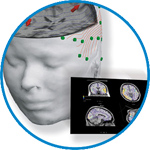- Home
- About ANT
-
Products

asa
asa is a highly flexible EEG/ERP and MEG analysis package with a variety of source reconstruction, signal analysis and MRI processing features.
.jpg)
eego mylab
The new frontier in multimodal brain research. With up to 16 kHz sampling rate, 256 EEG channels and unique software features, eego mylab gives you an unprecedented in-depth understanding of the human brain.

eego sports
eego sports offers complete freedom to collect high-density EEG data, bipolar EMG signals, and a variety of physiological sensor data, wherever and whenever required, with publish quality data in less than 15 minutes!

waveguard net
The waveguard net sets a new standard for research applications requiring high-density EEG data acquisition with quick preparation time, high flexibility, and subject comfort.

visor2
Our new and upgraded visor2 solutions integrate all the latest technologies for navigated rTMS, dual-coil navigation support, EEG-TMS recordings and pre-surgical evaluation for the highest quality in research and clinical procedures.

powerMAG ANT
The PowerMAG ANT 100 rTMS stimulator is designed for the specific needs of high-end TMS applications. Powerful high-frequency TMS as well as high precise single pulse and repetitive pulse protocols are combined in one single device.

xensor
xensor offers the solution for digitization of 3D electrode positions. xensor takes care of the whole procedure; it records, visualizes and stores positions acquired with a dedicated digitizer.

waveguard original
waveguard original is the cap solution for EEG measurements compatible with fMRI, MEG and TMS system. Use of active shielding guarantees performance in even the most demanding environments.

waveguard connect
waveguard connect EEG caps are a perfect match for hospitals and institutes aiming at reliable EEG, maximum uptime and great patient comfort! For optimal signal quality, the electrodes are made of pure, solid tin.

waveguard touch
waveguard touch is a dry electrode EEG cap. The unique Ag/AgCl coated soft polymer electrodes provide stable, research-grade EEG signals while maintaining subject comfort. The combination of these innovative dry electrodes and the industry-leading waveguard cap makes waveguard touch the best solution for dry EEG.

smartmove
smartmove allows planning of a complete TMS session ahead by defining stimulation sites based on anatomical MRI information and functional information like fMRI, PET or EEG/MEG.
Stay - References
- Support
- Events
- News
- Contact Us
You are here
Analytic consistency and neural correlates of peak alpha frequency in the study of pain
Analytic consistency and neural correlates of peak alpha frequency in the study of pain
Year:
2022
Journal:
Journal of Neuroscience Methods
Abstract:
Background
Several studies have found evidence of reduced resting-state peak alpha frequency (PAF) in populations with pain. However, the stability of PAF from different analytic pipelines used to study pain has not been determined and underlying neural correlates of PAF have not been validated in humans.
New method
For the first time we compare analytic pipelines and the relationship of PAF to activity in the whole brain and thalamus, a hypothesized generator of PAF. We collected resting-state functional magnetic resonance imaging (rs-fMRI) data and subsequently 64 channel resting-state electroencephalographic (EEG) from 47 healthy men, controls from an ongoing study of chronic prostatitis (a pain condition affecting men). We identified important variations in EEG processing for PAF from a review of 17 papers investigating the relationship between pain and PAF. We tested three progressively complex pre-processing pipelines and varied four postprocessing variables (epoch length, alpha band, calculation method, and region-of-interest [ROI]) that were inconsistent across the literature.
Results
We found a single principal component, well-represented by the average PAF across all electrodes (grand-average PAF), explained > 95% of the variance across participants. We also found the grand-average PAF was highly correlated among the pre-processing pipelines and primarily impacted by calculation method and ROI. Across methods, interindividual differences in PAF were correlated with rs-fMRI-estimated activity in the thalamus, insula, cingulate, and sensory cortices.
Conclusions
These results suggest PAF is a relatively stable marker with respect to common pre and post-processing methods used in pain research and reflects interindividual differences in thalamic and salience network function.
© Copyright 1999 - 2024 ANT Neuro |
www.ant-neuro.com |
Terms of Use |
Privacy Statement |
Contact |
USA Customers

 Read more
Read more.jpg)




